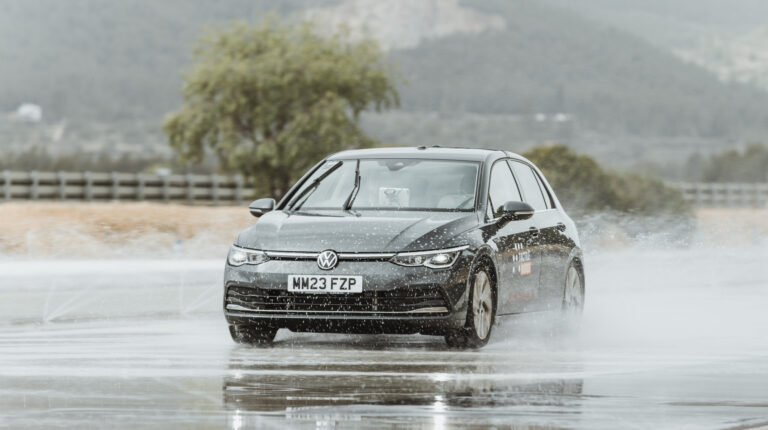Auto makers are grappling with the challenge of modernizing software-defined vehicles – a transformation complicated by outdated systems, fragmented development processes, constantly evolving regulations and the complex move to zonal architectures. What practical steps can the industry take to move forward?
As auto makers continue their push toward next-generation vehicles, many are struggling to bridge the gap between traditional hardware-driven models and software-defined vehicles. Despite anticipated advances in connectivity and autonomy, manufacturers are running into roadblocks, including outdated infrastructure, fragmented development processes and shifting regulatory requirements.
These obstacles make the transition to a software-centric design more difficult than expected. Successfully integrating software with hardware remains a complex task, requiring auto makers to rethink how vehicles are built from the ground up. Let’s explore the key challenges that they face and the steps they can take to overcome them.
Legacy systems and infrastructure
A key obstacle in the transition to SDVs is the reliance on legacy systems within the vehicle architecture and in the broader manufacturing process. Many OEMs are working with internal platforms that were originally designed for hardware-centric vehicles, making it difficult to integrate the advanced software required to build today’s connected, autonomous and electrified models.
Within vehicles themselves, outdated ECUs and other hardware-based systems often lack the flexibility needed to support efficient software integration. The software that powers modern vehicles must interact with multiple components, including sensors, connectivity modules and user interfaces, but legacy vehicle architectures were not built with this level of interoperability in mind.
Traditional assembly lines and supply chains are optimized for hardware updates rather than frequent software enhancements, making it challenging for auto makers to roll out new features efficiently. Updating an SDV may require software patches and hardware modifications, adding cost and complexity.
To overcome these limitations, new approaches focus on extracting real-time insights from existing vehicle data streams, enabling advanced perception and predictive analytics without requiring extensive hardware modifications. This shift enables manufacturers to bridge the gap between legacy infrastructure and software-driven architectures, facilitating a smoother transition to SDVs.
Fragmented development processes
Another challenge OEMs face is the fragmented nature of development processes. Compared with traditional vehicle manufacturing, software development follows a different timeline, requiring frequent updates and testing. Vehicle manufacturers must coordinate work from a wide range of teams, each handling different aspects of development, from hardware integration and connectivity to user experience and cybersecurity. However, these teams often operate in silos, using different methodologies, tools and development cycles.
This lack of coordination creates inefficiencies and incompatibilities, delaying the release of new SDVs and increasing the risk of software bugs, security vulnerabilities and performance issues. For instance, software updates meant to improve a vehicle’s autonomous capabilities might inadvertently conflict with existing sensor calibration or driver assistance systems, requiring additional testing and fixes before deployment.
Additionally, the software engineering talent required to build complex automotive platforms is scarce. Auto manufacturers are now competing with major tech firms for professionals skilled in machine learning, cybersecurity and embedded systems, making it difficult to attract and retain top talent.
Many traditional OEMs also struggle to adapt their corporate culture and workflows to accommodate agile development practices, which are standard in software-driven industries but less familiar in the automotive sector. Without a shift in talent acquisition and internal development strategies, auto makers will continue to face roadblocks in delivering the next generation of SDVs.
Evolving regulations and standards
The regulatory landscape surrounding automotive technologies is in constant flux. With growing emphasis on vehicle autonomy and connectivity, regulators are introducing new standards at a rapid pace. These rules complicate SDV development with varying safety, privacy and cybersecurity requirements.
For example, software-defined vehicles must comply not only with traditional safety standards, such as crashworthiness and braking performance, but also with cybersecurity protocols designed to protect connected systems from hacking. In Europe, the General Data Protection Regulation (GDPR) governs how personal data is collected, processed and stored, affecting everything from in-car infotainment systems to telematics data.
Meanwhile, in the United States, OEMs must navigate a patchwork of state and federal guidelines, with agencies like NHTSA offering guidance on cybersecurity without a unified national standard.
This divergence forces OEMs to tailor their software and hardware integrations to meet different legal requirements, which can slow development and increase costs. In addition, emerging standards – such as those being developed under the UNECE’s regulations on cybersecurity and software updates – add another layer of complexity, as manufacturers must ensure that vehicles remain compliant as regulations continue to evolve.
To navigate these evolving regulations, manufacturers are adopting software-defined sensing and vehicle intelligence solutions that enhance real-time safety and cybersecurity compliance. By incorporating embedded software that operates independently of vision-based systems, manufacturers can address regulatory challenges while ensuring optimal vehicle performance and data security.
Addressing the challenges
To modernize software-defined vehicles, auto makers must adopt flexible, scalable software platforms with modular architectures that support OTA updates. These updates enable manufacturers to deploy new features and security patches remotely without requiring physical modifications. Leveraging open-source frameworks like Autosar (Adaptive Automotive Open System Architecture) or ROS (Robot Operating System) can improve interoperability and streamline development. Digital twins – virtual models of physical vehicles – can also help test software-hardware integration before deployment, reducing costly errors.
Stronger collaboration between software and hardware teams is essential. Agile development, continuous integration and continuous deployment pipelines, and dedicated software centers can enhance efficiency. Partnering with technology companies, such as cloud service providers and cybersecurity specialists, can accelerate innovation and ensure compliance with evolving regulations.
Investing in talent is equally crucial. Auto makers should expand hiring beyond traditional mechanical engineers to include specialists in artificial intelligence, cloud computing and cybersecurity while also upskilling existing employees through targeted training programs.
Finally, AI-powered predictive analytics enables OEMs to continuously refine vehicle performance. This ensures that SDVs remain adaptable, safe and optimized for changing environments while also streamlining the integration of OTA updates and regulatory compliance measures.
Final thoughts
As the industry moves toward a fully software-defined future, real-time vehicle intelligence will be key to ensuring seamless adaptability across diverse road conditions, hardware constraints and regulatory shifts. By leveraging AI-driven predictive analytics and embedded software solutions, auto makers can enhance vehicle-road interaction, optimize performance and streamline over-the-air updates.
The shift to SDVs is not just about replacing hardware with software – it’s about redefining mobility through continuous, data-driven evolution. By embracing real-time insights and software-defined adaptability, auto makers can transform SDVs from static platforms into dynamic, responsive mobility solutions and unlock their full potential.


